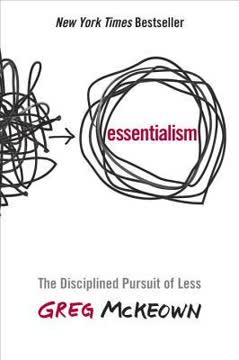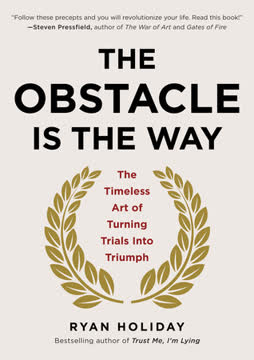Key Takeaways
1. Photography is a powerful form of non-verbal communication.
Photography is a form of non-verbal communication.
Conveying thought. At its core, a photograph is a message from the photographer to the viewer, akin to painting or music. Great photographs transcend the subject, allowing viewers to feel the essence of a person, landscape, or moment, even if they weren't there. The artist successfully conveys a message that speaks for itself.
Beyond documentation. While millions use cameras for simple snapshots to record events or places, meaningful photography goes deeper. It forces viewers to see something familiar in a new way, introduces them to the unknown, or raises questions that expand their vision and thoughts. Photography's inherent realism gives it a unique pertinence among art forms, capable of driving social change or raising consciousness.
Personal connection. To create a pertinent photograph, the photographer must deeply understand the world and their own interests and opinions. Just as an orator speaks passionately on their topic, photographers must focus on subjects that genuinely excite them. Enthusiasm is crucial; without it, the work feels labored and boring.
2. Composition is the art of directing the viewer's eye.
Good composition is the artist’s way of directing the viewer’s vision in a planned, de-randomized fashion.
Controlling perception. The human eye sees in small, sharp chunks and darts randomly across a scene. Composition is the photographer's method to bring order to this process, guiding the viewer's eye through the image in a controlled manner, highlighting elements in order of importance. It separates artists from snapshooters.
Unified thought & simplicity. Effective composition requires a central concept or "unified thought" that ties all elements together, preventing aimless wandering. For beginners and experienced photographers alike, simplicity is key; overly complicated images often fail because the photographer's intent is unclear.
Elements as tools. Various elements serve as tools for composition:
- Contrast and Tone: Direct the eye to high-contrast areas, set mood.
- Line and Form: Create visual pulls, tension, stability, or dynamism.
- Pattern: Establish visual rhythms through repetition and variation.
- Balance: Create comfort (symmetry) or tension (asymmetry).
- Movement: Guide the eye's flow through the image.
- Positive/Negative Space: Define shapes and interactions between subject and background.
- Texture: Add compelling visual detail and realism.
- Camera Position & Focal Length: Determine perspective and inclusion/exclusion.
- Depth of Field & Shutter Speed: Unique photographic controls for sharpness and motion.
3. Light is the fundamental element that determines form and mood.
Light determines form.
Drawing with light. Photography literally means "drawing with light." Film and sensors record only light levels, not objects. Knowledgeable photographers understand they are photographing light and how it reveals or is emitted by objects. Light is the most important compositional element because it dictates how lines, forms, and shapes appear.
Quality over quantity. Good light isn't just about brightness; it's about quality – its direction, color, sharpness, and diffusion. Different types of light evoke different moods:
- Strong directional light (sunlight, spotlights): Creates drama, reveals texture (crags, wrinkles).
- Soft non-directional light (overcast, open shade, light boxes): Creates smoothness, hides blemishes, is often more controllable.
- Backlighting: Can create silhouettes or glowing edges.
- Axis lighting: Light from behind the camera, can flatten scenes but reveal surface qualities.
Seeing light. Learning to see light accurately is crucial. Practice identifying the brightest and darkest areas in any scene. Understand how light changes throughout the day and how different lighting conditions would affect a subject. This awareness shifts your focus from merely recording a scene to interpreting it, using light to convey your feelings and commentary.
4. Visualization means seeing the final print before making the capture.
While you’re behind the camera—standing at the scene—you’re thinking about how to print that photograph.
Integrated process. Visualization is the core of creative photography, involving four steps:
- Photographic looking and seeing: Intense, analytical observation beyond casual perusal.
- Composing an image: Selecting camera position, lens, and framing based on visual relationships.
- Envisioning the final print: Translating the 3D scene into a 2D image, considering desired tones, contrast, and mood.
- Planning a strategy: Determining exposure, development (for film), and printing techniques needed to achieve the envisioned result.
Beyond the scene. The photograph is distinct from the scene. It distills visual and non-visual sensory input (sounds, smells, feelings) into a visual image. Instead of trying to "capture the scene," aim to convey the mood it evokes in you. This requires going beyond mere reproduction to personal interpretation.
Pre- and post-visualization. While previsualization (planning the final image beforehand) is ideal, postvisualization (discovering possibilities during editing or printing) is also valid. This can involve:
- Finding unexpected qualities in a print.
- Discovering that cropping or other alterations strengthen the image.
- Combining multiple images (as in photomontage or Uelsmann's work).
5. Mastering exposure is about precise control, not just metering.
All gray meters do the same thing: they average light within the viewing angle of the meter and give you a reading of the proper exposure for Zone 5.
The meter's limitation. A light meter (or "gray meter") is a tool that provides the correct exposure for a medium gray (Zone 5) based on the light it receives. It doesn't understand the subject. Blindly following the meter can lead to misexposures, especially with very bright or dark subjects (e.g., sunlit snow metered as gray).
Zone System logic. The Zone System provides a framework for precise exposure control by relating light levels in the scene to tonal values in the final print. Each "zone" represents a doubling (or halving) of light, equivalent to one f-stop or one shutter speed increment. By metering a specific area and knowing its desired tonal value (zone), you can adjust the meter's Zone 5 reading accordingly.
Beyond literal. The Zone System is not just for realistic exposures; it's a creative tool for departing from reality. You can intentionally expose areas higher or lower on the zone scale than their actual brightness to achieve a desired effect (e.g., rendering a dark forest high-key). Precision allows for both accurate representation and imaginative transformation.
6. Negative development or digital processing controls contrast and tonal range.
By varying the length of time for negative development, contrast can be increased or decreased in the black-and-white negative.
Molding the score. In film photography, exposure creates the latent image (the "score"), but development shapes its contrast ("the performance"). Development time primarily affects the higher zones (highlights), while lower zones (shadows) are determined mostly by exposure.
- Less-than-normal development (minus development): Decreases contrast, compressing the tonal range.
- Normal development: Maintains the scene's contrast.
- More-than-normal development (plus development): Increases contrast, expanding the tonal range.
Extended range. Black-and-white negatives capture a much wider brightness range (16-18 zones) than paper can display (10 zones). Understanding negative development allows you to compress this range to fit the paper or expand it for dramatic effect. Techniques like compensating development (using dilute developer and minimal agitation) can dramatically reduce contrast in high-contrast scenes while preserving detail.
Digital flexibility. Digital processing offers immense control over contrast and tonal range. RAW files capture a wide range (though typically less than film in a single capture), and software allows precise adjustment of highlights, shadows, midtones, and overall contrast. Multiple captures (HDR) can extend the digital range to encompass even the most contrasty scenes, offering flexibility analogous to, or exceeding, film's capabilities.
7. The print is the final artistic creation, molded by darkroom or digital techniques.
The print is your creation, and you are free to do whatever you want with your own creation.
The performance. The print is the culmination of the photographic process, where the photographer's vision is fully realized. It's where the "score" (negative or digital file) is interpreted and performed. Rarely does a negative or digital capture translate directly into a perfect print without manipulation.
Essential techniques. Darkroom and digital tools are used to mold light and tone:
- Dodging: Blocking light to lighten areas.
- Burning: Adding light to darken areas.
- Flashing: Adding blank light to increase density in highlights (traditional).
- Masking: Using a second negative or digital layer to control contrast or isolate areas.
- Reducing (Bleaching): Chemically lightening areas (traditional).
- Variable Contrast: Controlling contrast locally or globally (traditional/digital).
Beyond the scene. Manipulation is not just for correcting exposure or development issues; it's a creative act to enhance mood, direct the eye, or even create a scene that never existed. The goal is a print that conveys the desired feeling, even if it departs significantly from reality. The manipulation should be invisible, serving the image, not calling attention to itself.
8. Color adds a profound layer of composition and emotion.
The emotional connotations as well as some of the compositional elements involved with color have no analogy in black-and-white.
A different medium. Color photography is fundamentally different from black-and-white. Color itself must be a central, compelling element, not merely present. Choosing between color and black-and-white requires deciding which medium best serves the subject and your vision.
Color composition. Color acts as a powerful compositional tool:
- Color lines and forms: Guide the eye like tonal variations.
- Color contrast: Opposite colors create visual snap; related colors create harmony.
- Color balance and saturation: Influence mood and visual impact.
- Color relationships: Repetitions and echoes create visual rhythms.
- Positive/Negative Space: Can be defined by contrasting color families.
Color and mood. Colors evoke strong emotional and physical responses. "Warm" colors (reds, yellows) are active and can convey warmth or agitation. "Cool" colors (blues, greens) are passive and can convey calm or aloofness. Understanding these associations allows you to use color to enhance the desired mood.
9. Discard arbitrary rules and myths; embrace personal vision.
Avoid rules. Avoid formulas.
Rules are limiting. Arbitrary rules like the "rule of thirds" or "horizon should not divide the frame" are baseless and stifle creativity. They lead to predictable, mediocre results. Good composition is simply "the strongest way of seeing," regardless of whether it follows or breaks a rule.
Myths debunked:
- Zone System yields straight prints: False. Camera sees differently than the eye; darkroom/digital work is needed to match vision.
- Only 10 zones: False. Negatives record 16-18 zones; paper/digital can display more than 10 with manipulation.
- Shadows at Zone 3: False. Zone 4 or higher provides better shadow separation on the negative.
- Negatives need fixed density range: False. Density varies with subject and desired interpretation.
- Proof prints need same exposure: False. Proofs need varying exposure to show detail from negatives of varying density.
- Good landscapes only near sunrise/sunset: False. Good light and conditions occur throughout the day.
- BW prints need black, white, and tones: False. Tonal range should match desired mood.
Personal truth. Your point of view and honest response to a scene are paramount. Don't try to create what others expect. Emphasize what strikes you most strongly. Be aware of your intent and express it clearly and simply, even if your intent is to express confusion or complexity.
10. Creativity stems from desire, thought, experience, experimentation, and inner conviction.
Creativity is a product of desire, thought, experience, experimentation, and inner conviction.
Beyond originality. While Western art values originality, creativity is more than just doing something new. It's an exploration or inquiry into the world, emotions, and fantasies, resulting in forms that express human feelings. It requires intelligence and commitment.
Cultivating creativity:
- Desire: An active pursuit, not passive waiting.
- Thought: Careful planning, reasoning, and execution; understanding history as a springboard.
- Experience: Frees you from basics but guard against stagnation.
- Experimentation: Willingness to try new things despite risk of failure.
- Inner Conviction: Following your personal vision and sense of purpose, even without external validation.
Overcoming obstacles. Obstacles include resistance to trying new things, insufficient time, and external opposition to new directions. Creativity can be nurtured by pushing yourself (without pressure) and dedicating adequate time for reflection and practice.
11. Photography's unique power lies in its perceived realism, even in abstraction.
Photography is most powerful when it conveys a sense of reality and believability, not when it careens off into tonal or color illogic or utter silliness.
Realism's impact. Photography's inherent visual accuracy gives it immense power. Even manipulated images are often perceived as literal truth, allowing photographers to alter reality while presenting it as real. This power can be used for documentation, social commentary, or artistic expression.
Abstraction's strength. While realism is powerful, abstraction in photography also benefits from this perception. An abstract photograph, unlike an abstract painting, is still "of something real," imbuing it with a sense of reality that can heighten its meaning and impact. Abstraction allows for wider interpretation, inviting viewers to bring their own insights.
Beyond documentation. To rise to the level of art, a photograph must go beyond mere documentation. It needs a leap of imagination, heightened sensitivity, mystery, surprise, or a strong sense of drama or calm. It must be more than just a record of a person, place, or thing.
12. Artistic integrity is being true to your vision and communicating effectively.
Ultimately, the final product is a photographic print, and you want to present the best product you can create.
Honesty in vision. Artistic integrity means being honest about your vision and pursuing it, even if it involves extensive manipulation or creates controversy. The question is not "How was it made?" but "How do I respond to it?" The goal is to create an emotionally fulfilling experience for the viewer.
Communication's role. If art is communication, how much should you prioritize clarity for the viewer? While pleasing yourself is important, being open to constructive criticism from those whose opinions you value is not selling out; it's being open-minded. However, don't compromise your core artistic principles for the sake of popularity or trends.
Tools serve vision. The camera, darkroom, and computer are all tools for creative expression. Using any technique—from lens choice to digital manipulation—is legitimate as long as it serves your artistic goals and is not used for harmful deception. The key is thoughtful, skillful use of tools to complete your vision.
Last updated:
Review Summary
The Art of Photography by Bruce Barnbaum is highly praised for its insights into creative expression and technical aspects of photography. Readers appreciate the author's literary style and comprehensive coverage of both film and digital techniques. Many consider it one of the best photography books, especially for its discussion on composition, visualization, and artistic integrity. While some find the film-focused sections less relevant, the book is valued for its wisdom on developing personal style and creativity. Some criticisms include repetitiveness and an occasional dismissive tone towards beginners.
Similar Books










Download PDF
Download EPUB
.epub digital book format is ideal for reading ebooks on phones, tablets, and e-readers.




